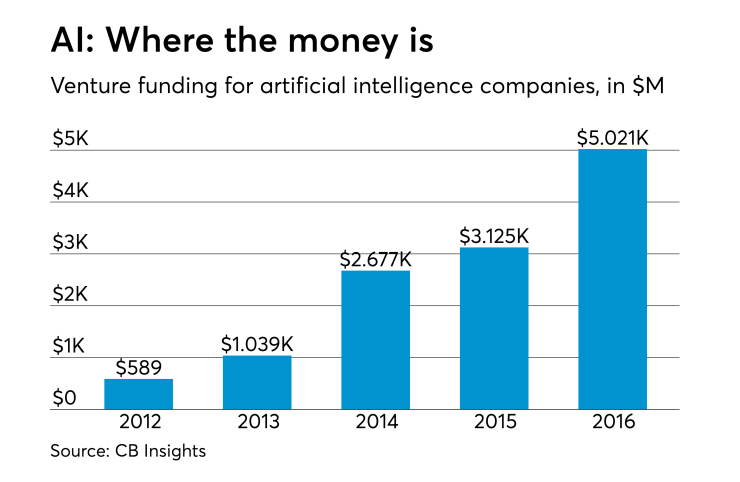Large companies have been practicing the art of end-to-end automated accounting for some time. Software manages transactions and accounts from start to finish, and the advanced AI-fueled solutions are even handling tasks like paying an invoice automatically. Because of this, corporate accountants are doing higher-level work, helping companies be more profitable and efficient. Many wonder if this type of accounting is probable, or even possible for small businesses.
But before we get ahead of ourselves — do small businesses even need the automated continuous accounting capability of large enterprises?
In a word, yes. Just as intelligent apps and real-time data help consumers get the best deals online and avoid traffic jams on the way to work, small businesses need better data to survive, let alone thrive.
Immediate information is life or death
The current reality of many small businesses is there is too much guesswork. Owners and managers typically can’t see important financial trends in the business on a daily or weekly basis. They must wait until the accountant closes the books at the end of the month, typically 15-21 days after month-end, which isn’t very helpful for small-business owners who need information on expenses, revenue, payroll, and even possible fraud when it happens, not five weeks after it happens.
A delay in data means that they are possibly (and probably) missing important data, like the impact of lower sales on the ability to pay next month’s fixed expenses, like rent or utilities. Getting data earlier means that the business owner can make smart decisions on how to cut back on expenses in the short term or delay a major purchase that can wait. An online retailer can see whether the company is sitting on too much inventory and should run a promotion to pare it back. A fast food franchise can evaluate payroll on a weekly basis and see whether an adjustment should be made in schedules or headcount based on sales trends. Daily automated analysis could indicate if an employee is stealing, allowing a manager to fix the problem immediately, instead of several weeks down the line when more damage is done.
The more data managers can see, the more areas can be considered for minor tweaks that can lead to long-term gains. And this is not just relevant for business-to-consumer companies — think of a small insurance agency that sees sales of a certain product increasing by 50 percent in the last 10 days. That knowledge can predict future sales, or prompt analysis to keep the momentum going.

The first steps
The small business must have transactions flowing automatically and continually into the accounting system. This is easy to do nowadays because of technology that small businesses already use to sell products and services and keep track of payroll and pay for expenses. By implementing proper automated rules, the business can trust that every financial transaction has been entered into the general ledger and coded accurately. The goal here is to obtain clean data effortlessly and eliminate needless human error and labor costs from manual entry.
The next step is employing technology that can do some analysis for you on these real-time data sets. This doesn’t mean the professional accountant’s job is done. It simply means that they will have more data easily available to help clients avoid problems, make better decisions and understand business trends well enough to optimize processes or offerings for success. That’s the value of a professional services firm – not using spreadsheets and inputting data. Armed with dashboards, alerts and some starting analysis, the accountant gets to see the entire financial picture as it is playing out. The accountant can identify fraud or troubling trends, such as low cash flow from late receivables, before it affects the business negatively.
The future
Few accountants enjoy pulling all-nighters to close the books. Even less enjoyable is correcting mistakes made along the way, which can be painstaking to uncover and rectify. By distributing these end-of-month tasks throughout the month, companies can optimize workflow and increase accuracy. Accounting staff, whether internal or external, are better able to add value to the business as more tasks are automated.
Free of manual tasks and an uneven workload, accountants will be proactive in their work — a significant shift from the reactive nature of accounting that has been status quo for so long. A focus on future-looking trends and analytics will be the new normal. Accountants will use their unique skills to identify fraud risk and other, more challenging compliance activities that have historically been put on the back burner due to lack of time. The accountant will truly become the trusted advisor their customer (internal or external) has been seeking.
Once a company can achieve continuous accounting, they can take advantage of artificial intelligence. With all the data in place and tasks automated, machine learning systems and smart software will figure out patterns and how things work in specific businesses. They can route invoices and contracts to the right people for approvals, make payments, or correct errors. These systems will be able to make forecasts for the CFO; For instance, when sales hit a certain mark, payroll should adjust accordingly.
Continuous accounting is the next logical step for small businesses everywhere, and it will unleash insights that can change a company’s fortune today and for the year ahead.





